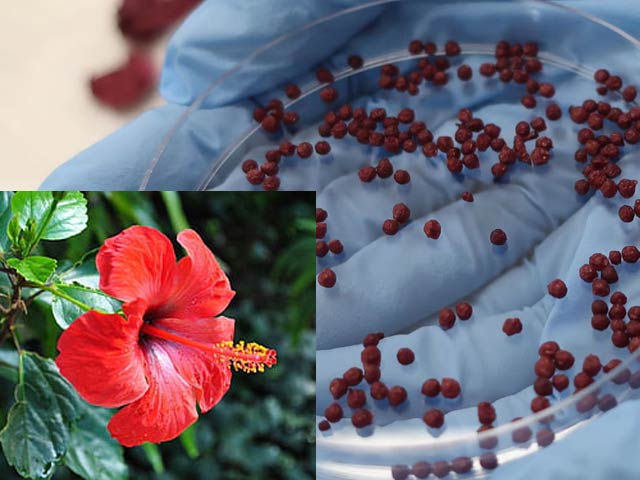
Two beneficial compounds have been extracted from a type of hibiscus flower that may be effective in preventing obesity. The extract is prominent in the dominant part of the image. Photo: File
Melbourne: You must have seen the large bright red flower in the gardens and park with the stem of the apricots sticking out. It is the marigold that has now been discovered to have valuable anti-obesity properties.
This flower is also called hibiscus in English, which has been researched by experts from Australia’s famous RMIT University. They have extracted special phenols from another flower from the same flower family, which are antioxidants on the one hand, and on the other hand, they have also distilled a compound called ‘hydroxycitric acid’ from them.
Then, alternately, human stem cells were taken and treated with phenolic acid extracted from the flower and hydroxycitric acid. Then an attempt was made to create fat cells or adipocytes from the stem cells, but surprisingly, the number of fat-causing cells in them was as low as 95%.
It was found that phenolic compounds also inhibited lipase, a digestive enzyme. Otherwise, lipases break down fat into smaller components and the body uses them for energy. However, excess fat accumulates in cells, tissues, and then throughout the body, making us fat.
Dr. Benu Adhikari and Dr. Manisha Singh of RMIT conducted the research. They are hopeful that by adding the two key ingredients obtained from the khatmi flower to a supplement, it can be made into a potent anti-obesity drug.
It should be noted that earlier this flower and its many parts have been used for skin improvement and blood circulation.
(function(d, s, id){
var js, fjs = d.getElementsByTagName(s)[0];
if (d.getElementById(id)) {return;}
js = d.createElement(s); js.id = id;
js.src = “//connect.facebook.net/en_US/sdk.js#xfbml=1&version=v2.3&appId=770767426360150”;
fjs.parentNode.insertBefore(js, fjs);
}(document, ‘script’, ‘facebook-jssdk’));
(function(d, s, id) {
var js, fjs = d.getElementsByTagName(s)[0];
if (d.getElementById(id)) return;
js = d.createElement(s); js.id = id;
js.src = “//connect.facebook.net/en_GB/sdk.js#xfbml=1&version=v2.7”;
fjs.parentNode.insertBefore(js, fjs);
}(document, ‘script’, ‘facebook-jssdk’));



